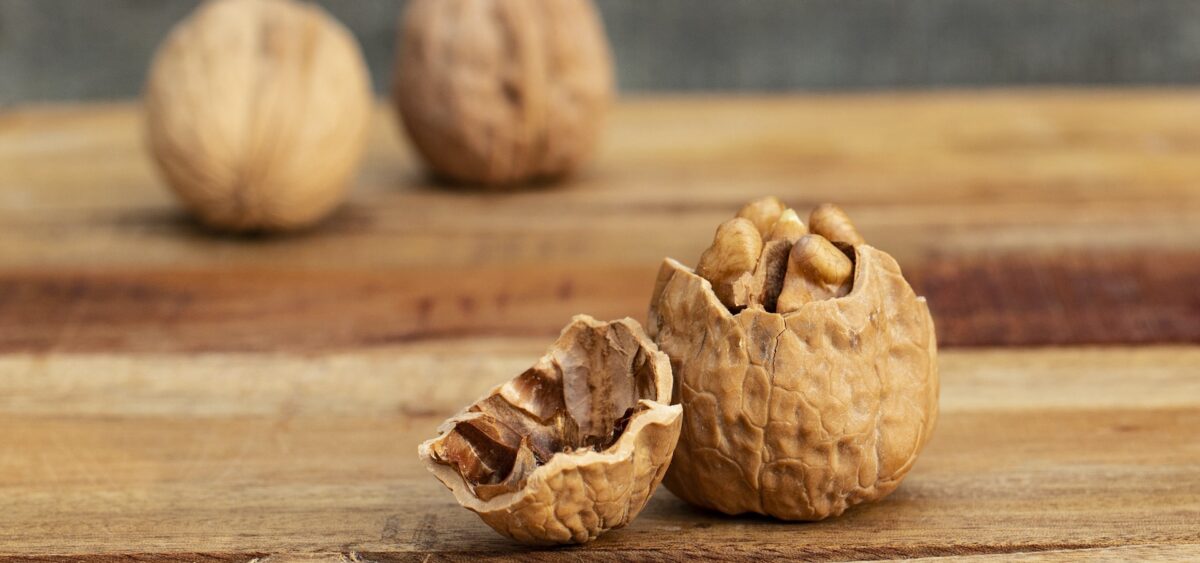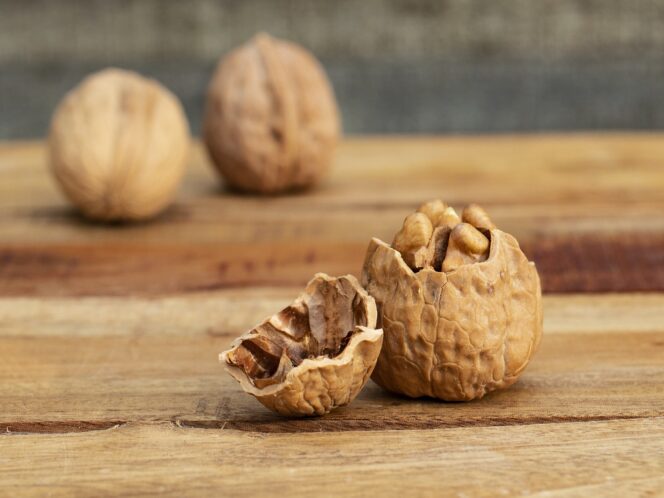
They resemble the shape of the human brain and have a great effect on memory, concentration, and mood. To make sure they are absorbed better, it is worth soaking them before eating them or—for advanced connoisseurs—pressing the oil out of them.
The name of the walnut in Polish, orzechy włoskie, meaning “the Italian nut,” suggests that this plant is particularly fond of warmth, typical of southern Europe. Indeed, there is some truth in the etymological explanations, this type of nut could be found in Poland’s climatic zone, quite sunny at that time, before the Ice Age came, and with it a large part of the flora became extinct. However, when the walnut tree settled in Poland for the second time, there was a funny mistake. In fact, it did not come from the Apennine Peninsula, but from the Balkans through Wallachia (a mountainous land in Romania). It is not without reason that in old cookbooks you can still find “Wallachian nuts”








